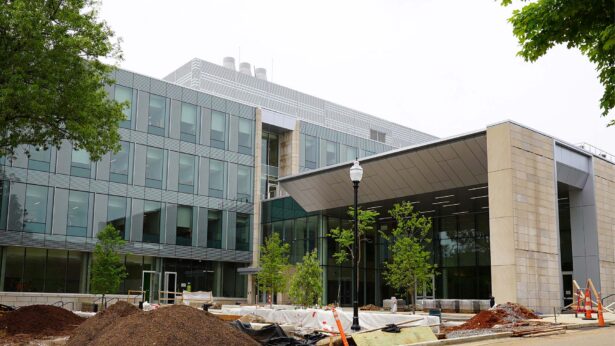This is a story told in numbers but played out in learning and living across the campuses that make up the University of Tennessee System.
Austin Oakes, UT System associate vice president of capital projects, leads planning, design and construction for the UT System, including the capital maintenance and renovations across the more than 1,000 buildings and 30.3 million square feet that serve more than 58,000 students.
“UT is in a wonderful position where our programs are growing across the state,” Oakes says. “This growth means that we’re able to lead a large number of projects, including restoring older buildings to modern standards and creating additional capacity through expansions and new buildings.”
When an existing building can no longer adequately meet the needs of the students it is designed to serve, UT determines whether it must be renovated or replaced, leading to capital projects. Enrollment growth also is driving UT’s building needs, with new residence halls and growing programs requiring more classroom spaces. As of spring 2024, UT has 187 active capital projects—including both new buildings and renovations—in design and construction, with a total budget of over $1.8 billion—and a plan for an additional $3.5 billion in construction as well as deferred maintenance.
UT funds the projects in different ways. For auxiliary projects, such as UT Chattanooga’s housing project to add 800 beds (slated for opening in fall 2027) or UT Knoxville’s Neyland Stadium renovations (scheduled for completion by fall 2025), revenues generated by users of the facilities will repay the debt issued by the state on behalf of the university—not tuition dollars.
For Neyland Stadium, that means ticket sales, food and beverage revenues, and donor support generate enough funds to pay for the upgrades, which include new bathrooms, enhanced food service, stadium-wide wi-fi and other enhancements to the fan experience. At UT Chattanooga, student housing fees from those living on campus will be used to repay the debt for the new residence hall.
“This ensures that tuition rates are not increased while we increase the numbers of beds available to support the student body,” Oakes says.
At UT Knoxville, three new housing facilities are being developed through a public-private partnership, in which a private company holds the debt for the project, and student housing fees will repay that debt. While this approach has been used successfully in other states and public universities, the university is pioneering this model for public institutions in the state of Tennessee, according to Oakes. More than 1,950 additional beds will be available as part of this project for the 2025 school year, followed by an additional 1,000 beds in 2026.
Funding academic buildings can be done in different ways, but new construction usually includes state appropriations. The projects must be approved by the Tennessee Higher Education Commission, which then forwards select projects to the governor as recommendations for inclusion in the annual budget. If the governor chooses to fund these projects and include them in the budget, the projects then must be approved by the Tennessee General Assembly.
UT must provide varying percentages of matching funds—including donor support—to receive final state approval. For example, UT Knoxville must provide 17 percent of a new building’s construction cost, with donors providing at least half of that percentage.
In design and construction planning, Oakes says UT works to be a good steward of the resources, making sure the structures built of concrete and steel will stand the test of time so generations of students can be prepared for their futures.
“We’re here to serve the people of Tennessee. Every project that we’re leading for our students is to make sure they are in environments where they can be successful in all of their endeavors, to be in spaces where they can learn and grow well,” Oakes says. “For our faculty who are leading research efforts, we want to make sure that they’re in spaces where they can do the cutting-edge research that improves the lives of all Tennesseans.”

